UM1765
User manual
Getting started with Bluetooth® low energy expansion board based
on BlueNRG for STM32 Nucleo
Introduction
This document provides detailed hardware requirements and board connections for the X-
NUCLEO-IDB04A1 Bluetooth® low energy (BLE) evaluation board based on BlueNRG for
STM32 Nucleo. This board is part of STMicroelectronics’ offering of evaluation boards
designed around the BlueNRG Bluetooth low energy wireless network processor.
The excellent performance of BlueNRG and the best matching between BlueNRG and
BALF-NRG-01D3, X-NUCLEO-IDB04A1 passed the RF TEST for Japan Radio Law
certification with higher margin above the specification values as well as it is FCC certified
(FCC ID: S9NIDB04A1).
Figure 1. X-NUCLEO-IDB04A1 evaluation board
July 2015
DocID026346 Rev 6
1/14
www.st.com
�
Contents
Contents
UM1765
1
2
3
4
5
6
Board description and getting started . . . . . . . . . . . . . . . . . . . . . . . . . . 3
Hardware requirements . . . . . . . . . . . . . . . . . . . . . . . . . . . . . . . . . . . . . . . 4
1.1
1.2
System requirements . . . . . . . . . . . . . . . . . . . . . . . . . . . . . . . . . . . . . . . . . 5
Hardware description . . . . . . . . . . . . . . . . . . . . . . . . . . . . . . . . . . . . . . . . 6
X-NUCLEO-IDB04A1 board . . . . . . . . . . . . . . . . . . . . . . . . . . . . . . . . . . . . 6
2.1
Current measurements . . . . . . . . . . . . . . . . . . . . . . . . . . . . . . . . . . . . . . 7
2.1.1
Formal Notices Required by the U.S. Federal
Communications Commission (“FCC”) . . . . . . . . . . . . . . . . . . . . . . . . . 8
List of acronyms . . . . . . . . . . . . . . . . . . . . . . . . . . . . . . . . . . . . . . . . . . . . 9
Board schematic and bill of material . . . . . . . . . . . . . . . . . . . . . . . . . . . 10
Revision history . . . . . . . . . . . . . . . . . . . . . . . . . . . . . . . . . . . . . . . . . . . 13
2/14
DocID026346 Rev 6
�
UM1765
Board description and getting started
1
Board description and getting started
The X-NUCLEO-IDB04A1 is a Bluetooth low energy evaluation board to allow expansion of
the STM32 Nucleo boards. It is compatible with the Arduino UNO R3 connector layout, and
is designed around BlueNRG, a Bluetooth low energy, low power network coprocessor
compliant with BTLE 4.0 and the BALF-NRG-01D3, an ultra-miniature balun optimized for
ST BlueNRG RF IC, which integrates matching network and harmonics filter. The X-
NUCLEO-IDB04A1 interfaces with the STM32 MCU via SPI pin, and the user can change
the default SPI clock, the SPI chip select and SPI IRQ by changing one resistor on the
evaluation board. The excellent performance of BlueNRG and the best matching between
BlueNRG and BALF-NRG-01D3, X-NUCLEO-IDB04A1 passed the RF TEST for Japan
Radio Law certification with higher margin above the specification values as well as it is
FCC certified (FCC ID: S9NIDB04A1).
Key features:
• BlueNRG low power, low energy Bluetooth network coprocessor
• BALF-NRG-01D3 balun & harmonic filter
• Free comprehensive development firmware library and example for BlueNRG, compatible
with STM32Cube firmware
• Bluetooth low energy 4.0 master and slave compliant
• Compatible with STM32 Nucleo boards
• Equipped with Arduino UNO R3 connector
• Very low power consumption: 7.3 mA RX and 8.2 mA TX at +0 dBm
• Maximum transmission power: +8 dBm
• Excellent receiver sensitivity (-88 dBm)
• X-NUCLEO-IDB04A1 is FCC certified (FCC ID: S9NIDB04A1)
• X-NUCLEO-IDB04A1 is officially certificated as a BTLE 5 mW module for Japan Radio
Law "TYPE" Certification by Japan government
• RoHS compliant
Figure 2. Functional block diagram
This section describes the hardware requirements for the X-NUCLEO-IDB04A1 evaluation
board.
DocID026346 Rev 6
3/14
14
�
Board description and getting started
UM1765
1.1
Hardware requirements
The X-NUCLEO-IDB04A1 is an expansion board for use with STM32 Nucleo boards (please
refer to UM1724 on www.st.com for further information). To function correctly, the STM32
Nucleo board must be connected to the X-NUCLEO-IDB04A1 board as shown in Figure 3
below.
Figure 3. X-NUCLEO-IDB04A1 plugged to STM32 Nucleo board
The interconnection between the STM32 Nucleo and the X-NUCLEO-IDB04A1 has been
designed to permit the use of any STM32 Nucleo board, although the optimal combination is
obtained using the NUCLEO-L152RE or NUCLEO-L053R8 hosting the ultra-low power
STM32.
4/14
DocID026346 Rev 6
�
UM1765
1.2
Board description and getting started
System requirements
Using the Nucleo boards with the X-NUCLEO-IDB04A1 expansion board requires the
following software and hardware:
•
•
a Windows PC (XP, Vista, 7, 8) to install the software package
a USB type A to Mini-B USB cable to connect the Nucleo to the PC
Installation of the board firmware package (order code: X-CUBE-BLE1) and the BlueNRG
graphical user interface utility on the user’s PC requires the following:
•
•
At least 128 MB of RAM
40 MB of hard disk space available
The X-CUBE-BLE1 firmware and related documentation is available on www.st.com.
DocID026346 Rev 6
5/14
14
�
Hardware description
UM1765
2
Hardware description
This section describes the X-NUCLEO-IDB04A1 features and provides information which
could be useful for understanding the board schematics.
2.1
X-NUCLEO-IDB04A1 board
The board allows the user to test the functionality of the BlueNRG processor. It hosts the
innovative BALF-NRG-01D3 balun & harmonic filter and its functionality can be exploited
using the firmware package contained in the X-CUBE-BLE1. It is fundamental to program
the microcontroller on the STM32 Nucleo board. Please refer to user manuals UM1724 and
UM1725, available on www.st.com.
The BlueNRG processor and the STM32 Nucleo board are connected through connectors
CN5, CN6, CN8 and CN9 (see Table 1 for details). The pins indicated with an asterisk (*)
represent an alternative pin for that specific function, i.e. SPI_IRQ could be moved from
CN8.1 to CN5.2.
Table 1. Interconnection between STM32 Nucleo board and X-NUCLEO-IDB04A1
F
E
R
O
I
T
E
S
E
R
C
N
3
V
3
V
5
D
N
G
D
N
G
N
V
I
1
2
3
4
5
6
7
8
Left connectors
3
V
3
D
N
G
D
N
G
0
A
1
A
2
A
3
A
4
A
5
A
3
4
5
6
1
Q
R
I
_
I
P
S
2
*
N
S
C
_
I
P
S
5
1
D
4
1
D
F
E
R
A
D
N
G
3
1
D
2
1
D
1
1
D
0
1
D
9
D
8
D
7
D
6
D
5
D
4
D
3
D
2
D
1
D
0
D
Right connectors
CN5 digital
CN9 digital
10
9
8
7
6
5
4
3
2
1
8
7
6
5
4
3
2
1
*
K
L
C
_
P
S
I
D
N
G
I
O
S
M
_
P
S
I
I
S
O
M
_
P
S
I
N
S
C
M
_
P
S
I
T
S
R
_
G
R
N
B
K
L
C
_
P
S
I
*
I
Q
R
_
P
S
I
To change the default pin SPI_CLK, SPI_IRQ and SPI_CSN the user must disassemble,
respectively,R10, R12 and R15, and assemble R11, R16 and R13.
6/14
DocID026346 Rev 6
�
UM1765
Hardware description
The board also includes:
–
–
–
–
a high frequency 16 MHz crystal
a low frequency 32 kHz crystal for lowest power consumption
a BALF-NRG-01D3 balun & harmonic filter
an EEPROM M95640-RMN6TP to store the board parameters
Not mounted:
–
–
a JTAG connector to program the BlueNRG processor
an SMA connector for the external antenna
2.1.1
Current measurements
To monitor the power consumption of entire BlueNRG X-NUCLEO-IDB04A1 board, jumper
U5 can be used, inserting an ammeter probe between pins 1 and 2 of the connector. Since
the power consumption of BlueNRG during most of its operating time is very low, an
accurate instrument in the range of few µA may be required.
DocID026346 Rev 6
7/14
14
�
Formal Notices Required by the U.S. Federal Communications Commission (“FCC”)
UM1765
3
Formal Notices Required by the U.S. Federal
Communications Commission (“FCC”)
Any changes or modifications to this equipment not expressly approved by
STMicroelectronics may cause harmful interference and void the user’s authority to operate
this equipment.
This device complies with Part 15 of the FCC Rules. Operation is subject to the following
two conditions: (1) this device may not cause harmful interference, and (2) this device must
accept any interference received, including any interference that may cause undesired
operation.
This device uses, generates and radiated radio frequency energy. The radio frequency
energy produced by this device is well below the maximum exposure allows by Federal
Communications Commission (FCC).
The X-NUCLEO-IDB04A1 is FCC certified (FCC ID: S9NIDB04A1).
8/14
DocID026346 Rev 6
�

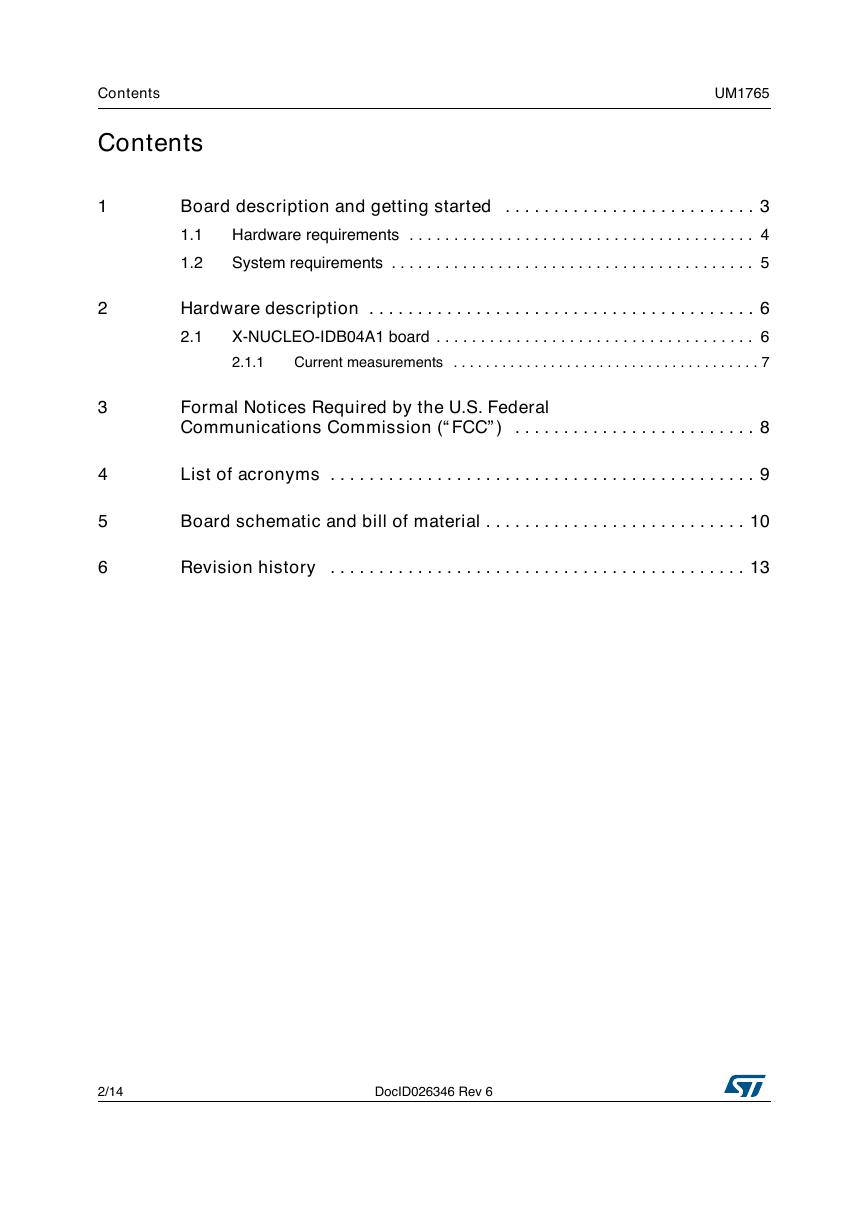
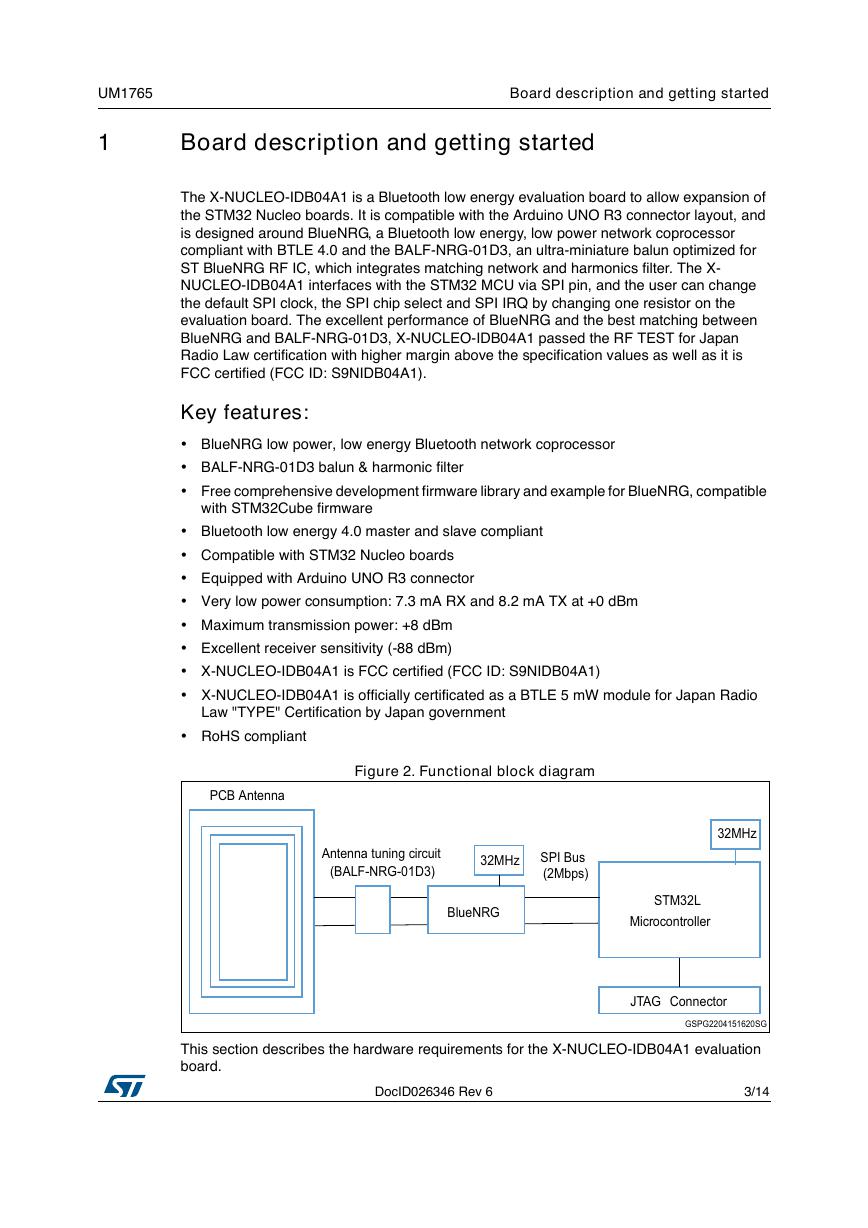
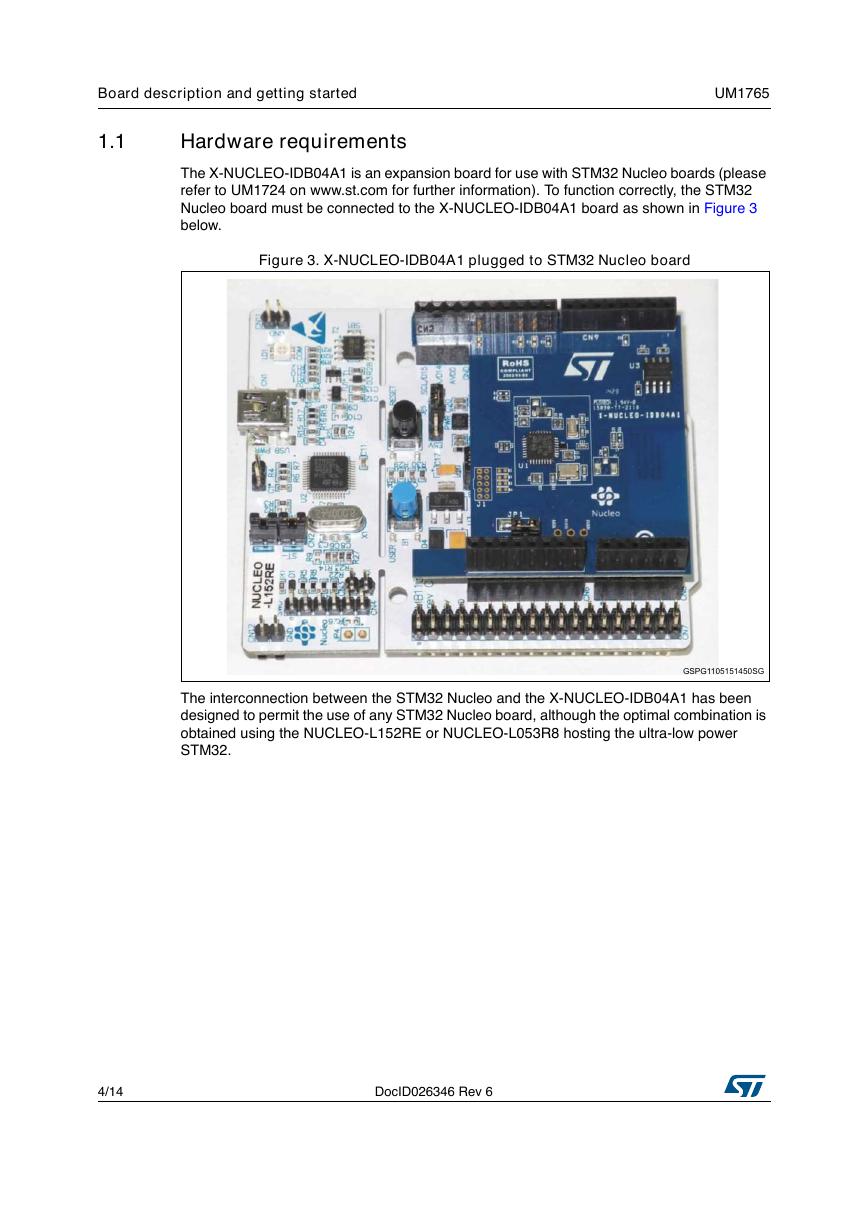
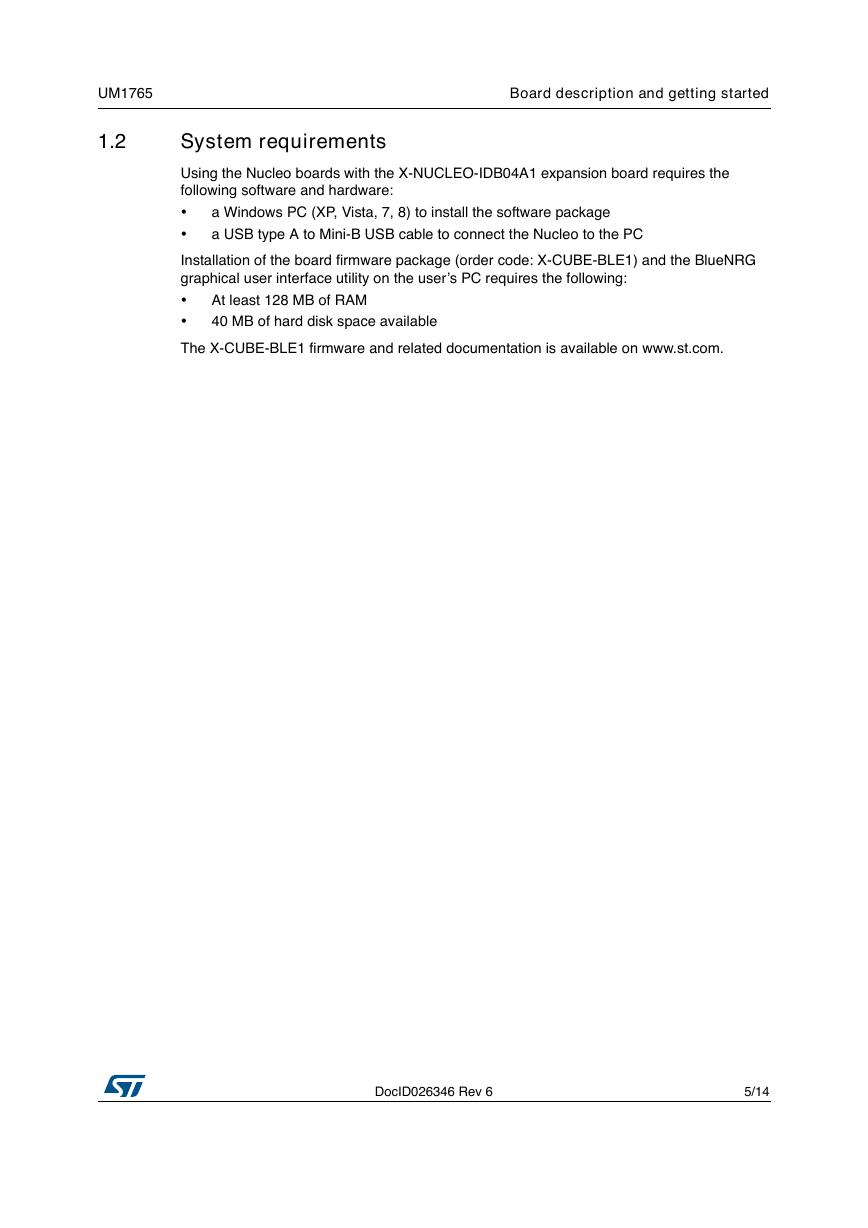
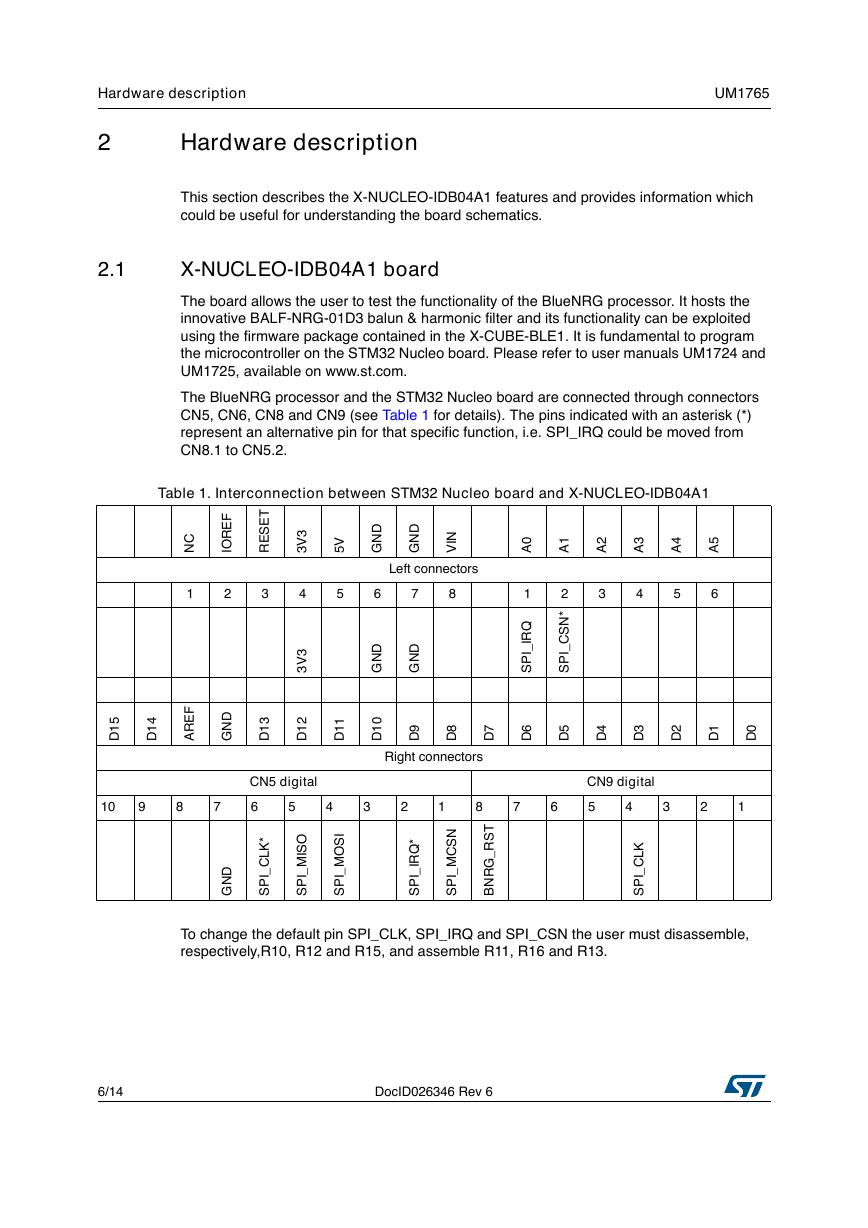
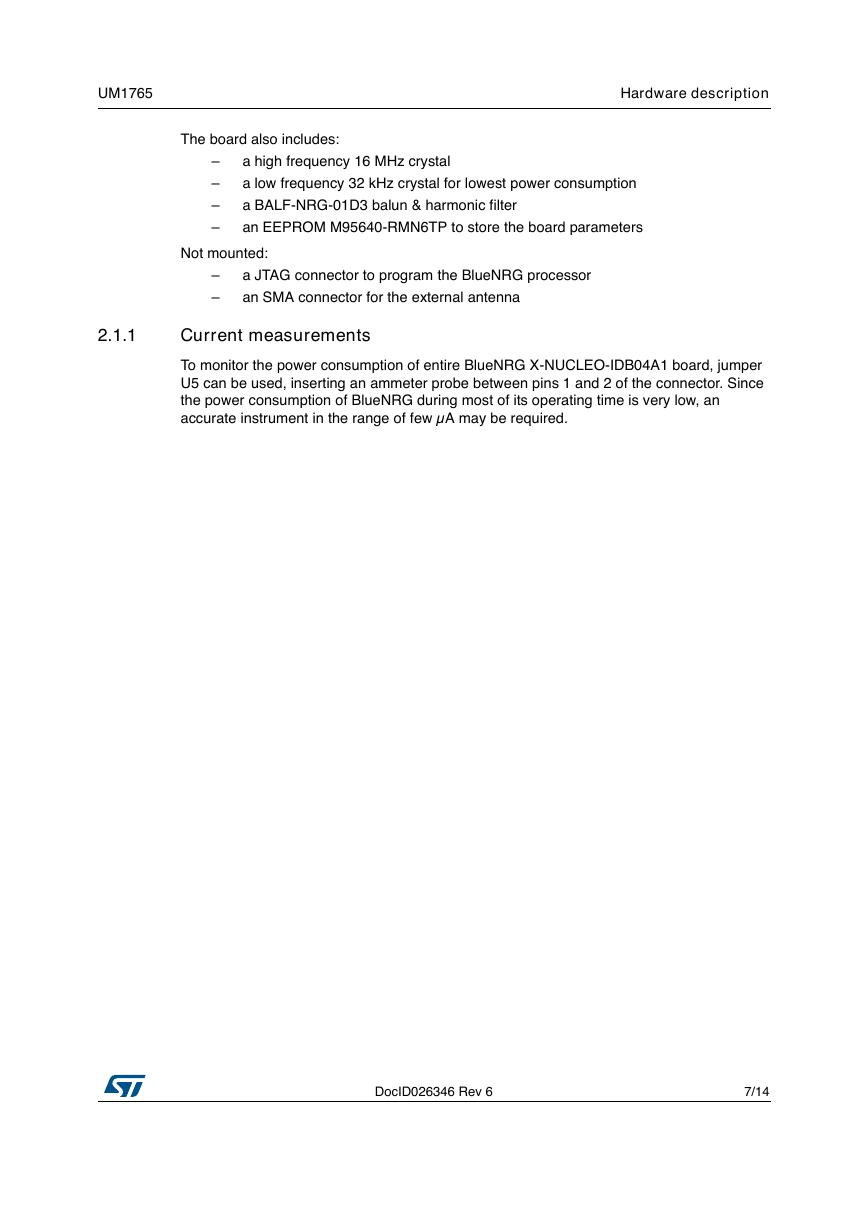
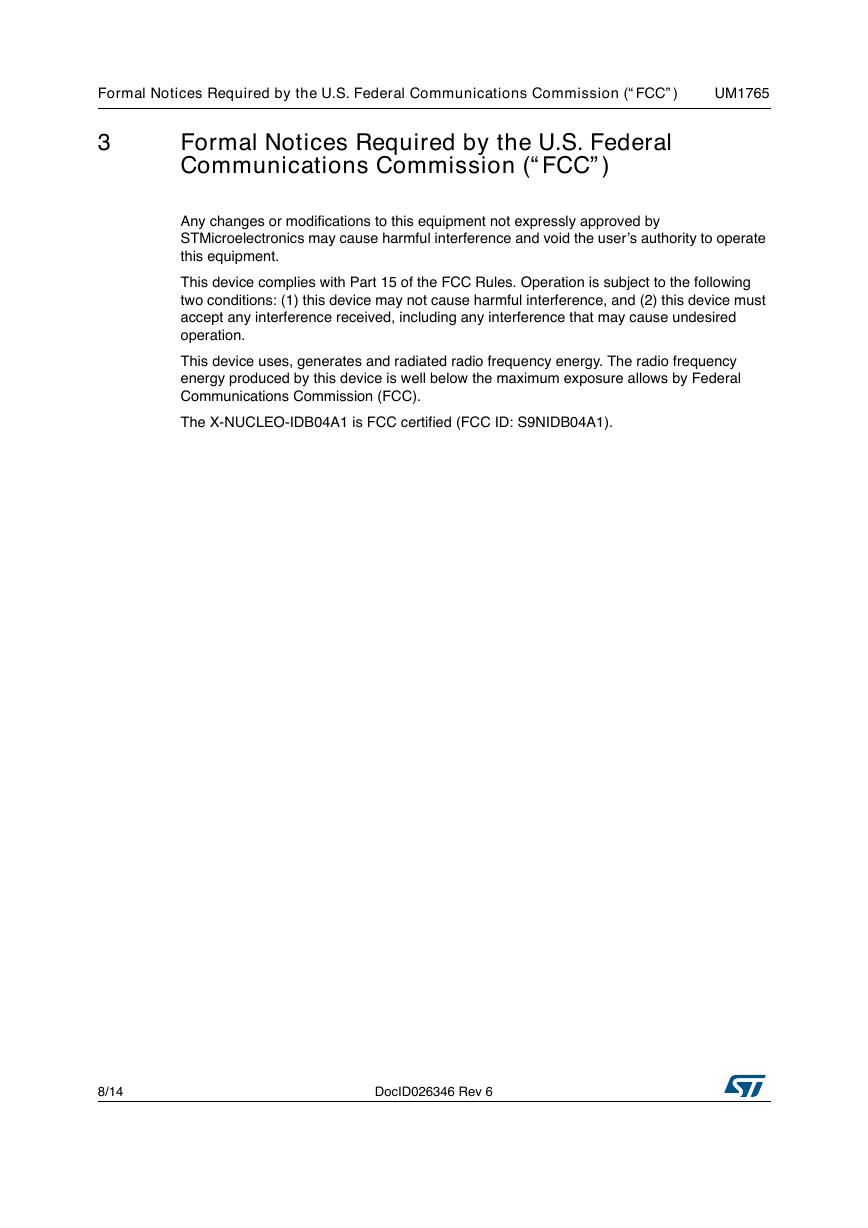








 V2版本原理图(Capacitive-Fingerprint-Reader-Schematic_V2).pdf
V2版本原理图(Capacitive-Fingerprint-Reader-Schematic_V2).pdf 摄像头工作原理.doc
摄像头工作原理.doc VL53L0X简要说明(En.FLVL53L00216).pdf
VL53L0X简要说明(En.FLVL53L00216).pdf 原理图(DVK720-Schematic).pdf
原理图(DVK720-Schematic).pdf 原理图(Pico-Clock-Green-Schdoc).pdf
原理图(Pico-Clock-Green-Schdoc).pdf 原理图(RS485-CAN-HAT-B-schematic).pdf
原理图(RS485-CAN-HAT-B-schematic).pdf File:SIM7500_SIM7600_SIM7800 Series_SSL_Application Note_V2.00.pdf
File:SIM7500_SIM7600_SIM7800 Series_SSL_Application Note_V2.00.pdf ADS1263(Ads1262).pdf
ADS1263(Ads1262).pdf 原理图(Open429Z-D-Schematic).pdf
原理图(Open429Z-D-Schematic).pdf 用户手册(Capacitive_Fingerprint_Reader_User_Manual_CN).pdf
用户手册(Capacitive_Fingerprint_Reader_User_Manual_CN).pdf CY7C68013A(英文版)(CY7C68013A).pdf
CY7C68013A(英文版)(CY7C68013A).pdf TechnicalReference_Dem.pdf
TechnicalReference_Dem.pdf